I really enjoyed the activities. I work with 3 years of elementary school.
Working with thousand unit, math exercises thousand unit to print.
Class taught by teacher Ynayah
Lesson theme: Construction of the hundred and the thousand unit.
Construction of the hundred, ten and unit
The construction of the hundred and the thousand unit. This set consists of white pieces each symbolizing the unity, red or blue bars symbolizing the ten, plates symbolizing the hundred and cubes
representative of the thousand. Allows calculation of matte operationsmatics.

The numbering system we use is a decimal system, as we count in groups of 10. The word decimal comes from the Latin word decem, which means 10. It was invented by the Hindus, perfected and brought to Europe by the Arabs. Hence the name Indo-Arabic. This numbering system has some characteristics:
Use only the Indo-Arabic numerals 0-1-2-3-4-5-6-7-8-9 to represent any quantity.
Every 10 units of an order form one unit of the next order. Watch.
10 units = 1 ten = 10
10 tens = 1 hundred = 100
10 hundreds = 1 unit of thousands = 1000
Another feature is that it follows the principle of the positional value of the digit, that is, each digit has a value according to the position it occupies in the representation of the numeral.
We then have the following positional (or order) chart:
4th order 3rd order 2nd order 1st order
one thousand unit hundred units ten units units
Note: In this number: 632 the digit 2 represents 2 units and is worth 2 (1st order); the digit 3 represents 3 tens, that is, 3 groups of 10 units and is worth 30 (2nd order); the number 6 represents 6 hundreds, that is, 6 groups of 100 units and is worth 600 (3rd order). That is, 600 + 30 + 2 is equal to 632, which we read six hundred and thirty-two. In this number: 7,156 the digit 6 represents 6 units and is worth 6 (1st order). the number 5 represents 5 tens and is worth 50 (2nd order). the number 1 represents 1 hundred and is worth 100 (3rd order). the digit 7 represents 7 thousand units and is worth 7000 (4th order).
example:
Tiago's uncle owns a bakery that sells delicious breads, donuts, snacks and sweets. He uses a lot of eggs in his bakery, so he bought 10 egg cartons. And each box holds 10 eggs.Note that 100 units equals 10 tens and 1 hundred. Notice how the numbers given by a hundred are formed.
The unit belongs to the 1st order, the ten belongs to the 2nd order and the hundred belongs to the 3rd order. Look: 
Units, hundreds, tens and thousands
| 10 + 10 = 20 = 2 tens 10 + 10 + 10 = 30 = 3 tens 10 + 10 + 10 + 10 = 40 = 4 tens 10 + 10 + 10 + 10 + 10 = 50 = 5 tens 10 + 10 + 10 + 10 + 10 + 10 = 60 = 6 tens 10 + 10 + 10 + 10 + 10 + 10 + 10 = 70 = 7 tens 10 + 10 + 10 + 10 + 10 + 10 + 10 + 10 = 80 = 8 tens 10 + 10 + 10 + 10 + 10 + 10 + 10 + 10 + 10 = 90 = 9 tens 10 + 10 + 10 + 10 + 10 + 10 + 10 + 10 + 10 + 10 = 100 = 10 tens |
a hundred have 10 tens |
| 100 + 100 = 200 = 2 hundreds 100 + 100 + 100 = 300 = 3 hundreds 100 + 100 + 100 + 100 = 400 = 4 hundreds 100 + 100 + 100 + 100 + 100 = 500 = 5 hundreds 100 + 100 + 100 + 100 + 100 + 100 = 600 = 6 hundreds 100 + 100 + 100 + 100 + 100 + 100 + 100 = 700 = 7 hundreds 100 + 100 + 100 + 100 + 100 + 100 + 100 + 100 = 800 = 8 hundreds 100 + 100 + 100 + 100 + 100 + 100 + 100 + 100 + 100 = 900 = 9 hundreds 100 + 100 + 100 + 100 + 100 + 100 + 100 + 100 + 100 + 100 = 1000 = 10 hundreds |
a thousand has 10 hundreds |
Every number belongs to an order and a class. They may belong to classes of millions, thousands and simple units, and each of these orders has the orders: unit, tens and hundreds.
In order to get students to practice which class and order a certain number belongs to, it is interesting to use the abacus. For that we must build it.
You will need a styrofoam, 6 barbecue sticks, paint in the colors: dark blue, lilac, yellow, green, blue, red, glue (styrofoam), EVA.
The base of the abacus is built with Styrofoam.
The toothpicks will mark classes and orders
The pieces will be built with EVA (build 10 pieces of each color).
After the construction of the abacus, just distribute numbers to each group of students for them to represent on the abacus, for example:
The number 456,789 (four hundred and fifty-six thousand, seven hundred and eighty-nine) would be on the abacus as follows:
CM DM UM C D U
4 5 6 7 8 9

• Numbers are written on the abacus from right to left.
• When passing numbers to groups it is important to ask them to write them out.






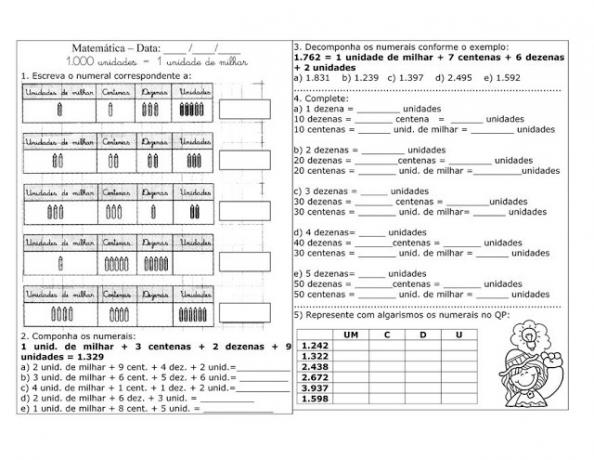
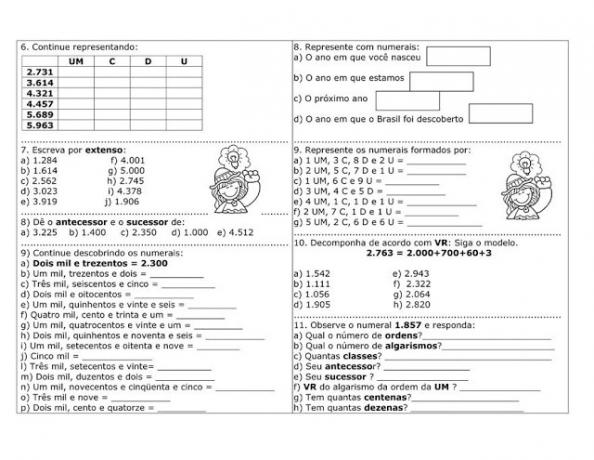
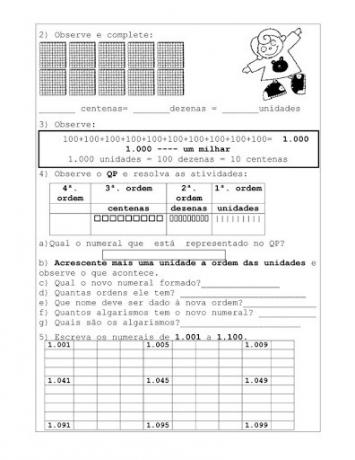
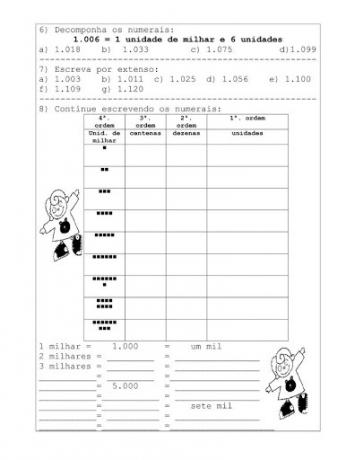

Bibliographic references
Doing and Understanding: Mathematics – 1 Grade – 1 Grade
Author: SANCHEZ, LUCILIA
BECHARA, LIBERMAN, MANHUCIA PERELBERG, MOTTA REGINA LUCIA DA WEY Publisher: Saraiva
Origin: National Year: 2005
Book – Learning Together: Mathematics 1 – Elementary School –
Rossi ,Silvana Julio, Publisher
No year 2006
Did you like it? Share this post on your social network
 3rd Grade Math Activities
3rd Grade Math Activities
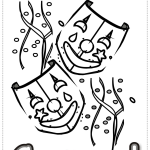 carnival drawings to paint
carnival drawings to paint
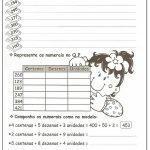 COMPOSING AND BREAKING NUMBERS ACTIVITIES
COMPOSING AND BREAKING NUMBERS ACTIVITIES
 School activities about carnival
School activities about carnival
 Mathematical test model 3rd year
Mathematical test model 3rd year
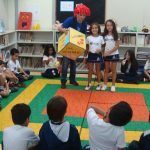 RECREATIONAL ACTIVITIES FOR EARLY CHILDHOOD EDUCATION
RECREATIONAL ACTIVITIES FOR EARLY CHILDHOOD EDUCATION
I really enjoyed the activities. I work with 3 years of elementary school.
This site uses Akismet to reduce spam. Learn how your comment data is processed.